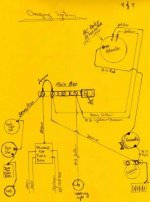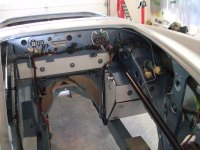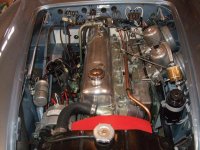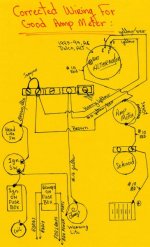Hello All,
Considering replacing generator with a dynamator - a Lucas C40 style alternator - on my AH 3000 BJ7 and have a couple of questions:
1. The generator's nut, pulley, fan and woodruff key are all transferred on to the Dynamator. Is the woodruff key (no. 19 illustrated below) readily available from a well stocked hardware store? And if so, what are the dimensions?
2. Alternator conversion require re-wiring and a choice to "gut" and modify the Voltage Regulator so that it could be used as a junction box for original wiring. Coils and resistor, from the backside, should be removed. But how are the isolated terminals then modified or "jumped" to keep original wiring locations to A1, A, F, D E terminals functional? I'm trying to avoid bunching wires into the D and A/A1 terminals.
In planning stages now, but will report back with pics on the project later. Thanks, GONZO

Considering replacing generator with a dynamator - a Lucas C40 style alternator - on my AH 3000 BJ7 and have a couple of questions:
1. The generator's nut, pulley, fan and woodruff key are all transferred on to the Dynamator. Is the woodruff key (no. 19 illustrated below) readily available from a well stocked hardware store? And if so, what are the dimensions?
2. Alternator conversion require re-wiring and a choice to "gut" and modify the Voltage Regulator so that it could be used as a junction box for original wiring. Coils and resistor, from the backside, should be removed. But how are the isolated terminals then modified or "jumped" to keep original wiring locations to A1, A, F, D E terminals functional? I'm trying to avoid bunching wires into the D and A/A1 terminals.
In planning stages now, but will report back with pics on the project later. Thanks, GONZO


 Hi Guest!
Hi Guest!

 smilie in place of the real @
smilie in place of the real @
 Pretty Please - add it to our Events forum(s) and add to the calendar! >>
Pretty Please - add it to our Events forum(s) and add to the calendar! >> 





